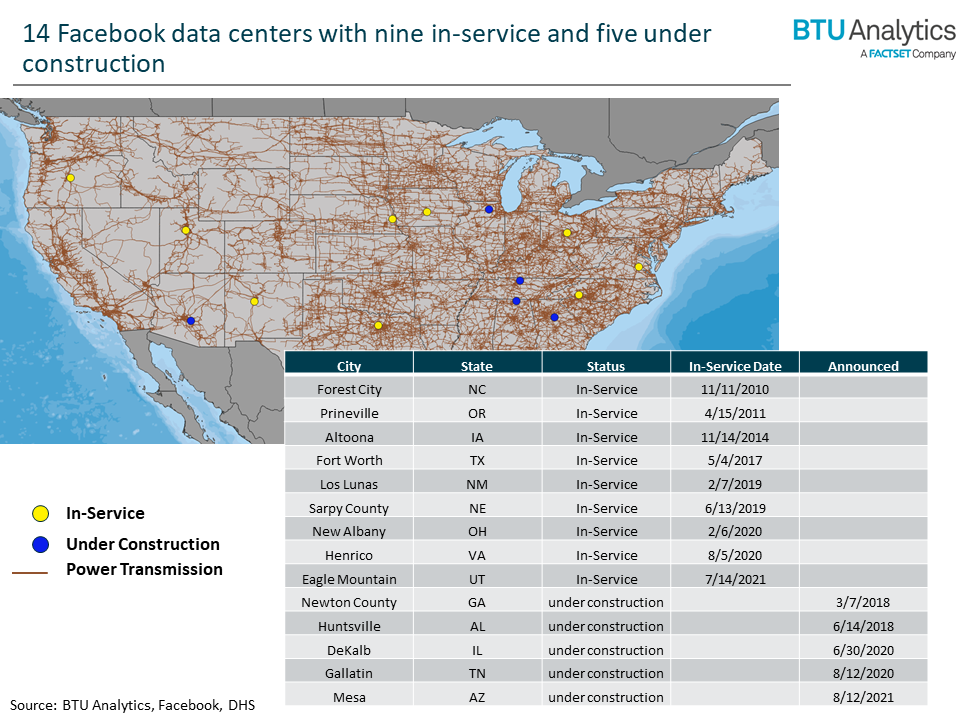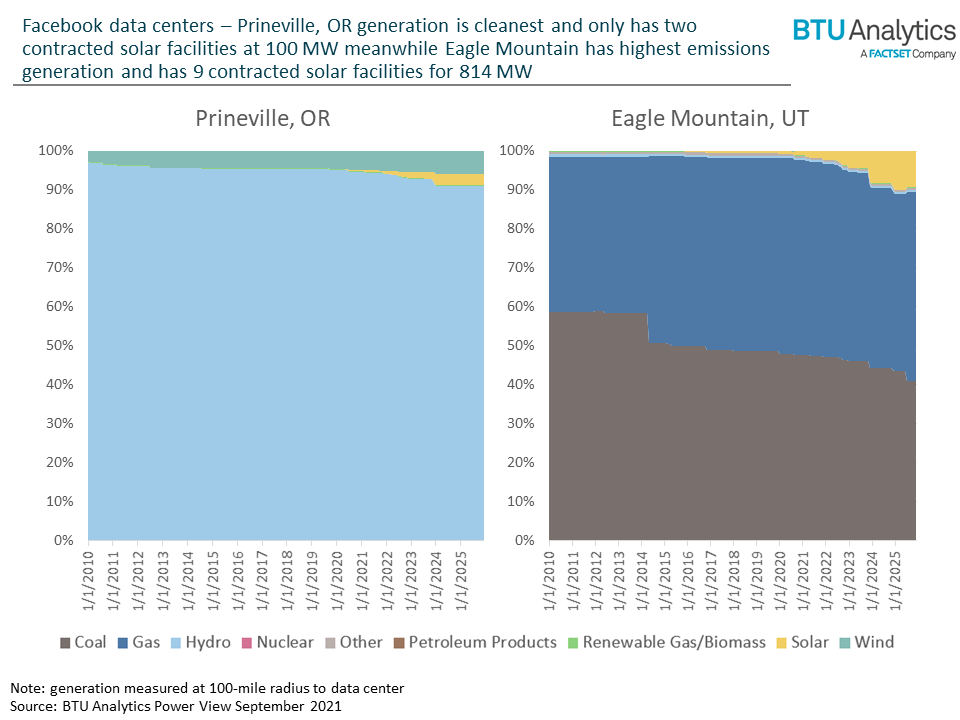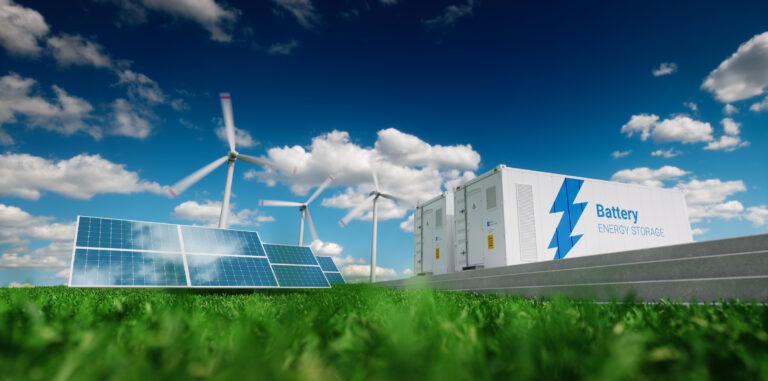Data center locations are determined by a mix of elements including proximity to low-cost land, urban centers, good power transmission, and large internet backbones. One of the major contributors of load growth in the US in recent years has been the proliferation of these data centers across the country. In this Energy Market Insight, we will look at Facebook data centers and how electric generation changes around these facilities when they are built. Does the development of Facebook data centers go hand-in-hand with the decarbonization of the nearby electric grid?

As shown above, Facebook has 14 US data centers with nine in-service and five currently under construction. In this analysis BTU Analytics used proximity analysis of a 100-mile radius to Facebook data centers to analyze how electric generation has changed over time around these data centers.
While various in-service Facebook data centers have come online between 2010 and July 2021, there are some differences in both how electric generation has and is expected to change through 2025 for facilities ‘in-service’ versus ‘under construction’. It does appear based on proximity analysis that electric generation around in-service Facebook data centers will approach 20% generation from wind and solar by 2025 as shown in the graphic below.

Facebook has been an active buyer of renewable energy power purchase agreements (PPAs) over the last several years which makes sense considering Facebook has achieved its goal of 100% renewable energy by 2020. When electric generation around ‘in-service’ vs ‘under construction’ data centers is compared we can see ‘under construction’ expected electric capacity from wind and solar is under 10% by 2025. Granted, considering Facebook just recently announced the Gallatin, TN data center in 2020 and the Mesa, AZ data center in 2021, forthcoming PPAs may be signed, and projects can enter service in a few years to increase the mix of renewables in the area. Also note that some contracted PPAs for data centers may be for resources that lie outside of the 100-mile radius used in this analysis.

The cleanest electric generation is located around the Prineville, OR data center which went into service in 2011 and has 100% renewable generation around it in the form of hydro, biomass, solar, and wind. Additionally, Facebook lists two contracted solar facilities for a total of 100 MW on their sustainability website for this data center. The clean generation mix in Prineville may explain in part why Facebook selected this site which went into service in 2011. Meanwhile the Eagle Mountain data center in Utah went into service in July 2021. The capacity proximate to this data center has the highest emission intensity of all the Facebook data centers with 90% if capacity is from coal or natural gas generation. Considering Facebook’s commitment to renewable energy, it is not surprising that Facebook lists nine solar projects contracted for a total of 814 MW supporting this data center. Further, the Eagle Mountain, UT data center currently has 508 MW of solar capacity and is expected to have 3.4 GW of solar within a 100-mile radius by year end 2025.
In recent years, the US’ grid has been on a path of decarbonization. Part of this has been attributable to corporate policies such as Facebooks’. In fact, from this analysis it does appear renewables development is accelerated proximate to Facebook datacenters. While this helps to decarbonize Facebook’s slice of the grid, renewables development further afield is making strides for other corporates and utilities. To follow these trends in renewable generation development, subscribe to BTU’s Power View.









